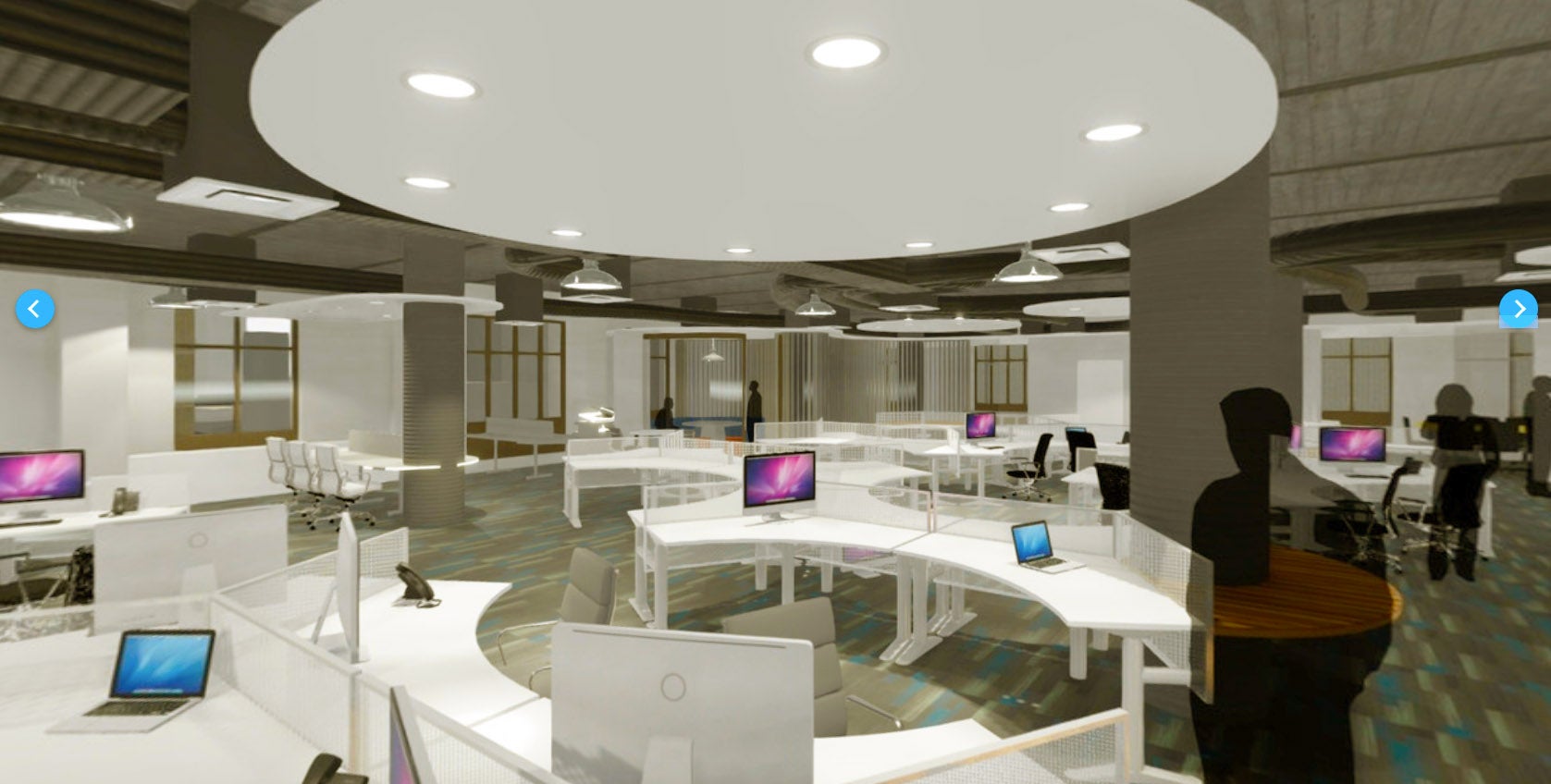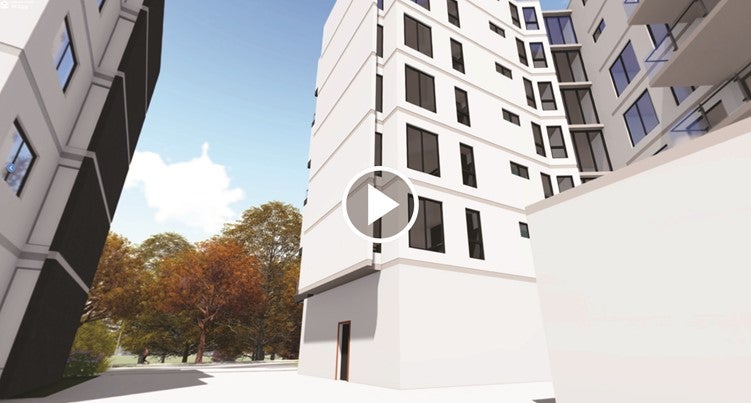
Australian-developed virtual reality technology is advancing rapidly, enabling architects to provide immersive experiences for clients and construction partners alike.
Imagine walking into your new office or apartment building and seeing how the spaces connect and the finishes synchronise before the first structural steel beam or sheet of plasterboard have been erected. New virtual reality (VR) design technology is enabling architects to create immersive experiences for clients and stakeholders at the same time as developing the architectural detail for their projects.
The technology brings benefits to the client experience, architects and designers and even to construction engineers and builders. With its powerful rendering capabilities, users are able to undertake a virtual walk-through of a three-dimensional space, exploring spatial relationships and visualising finishings, colour schemes and furnishings.
Visionata’s vision
Lee Hughes of Visionata Architects is a fervent VR proponent and says the technology is revolutionising his practice and his interaction with clients and constructors. One of these clients is InfraBuild’s (formerly LIBERTY OneSteel) owner GFG Alliance, which is currently remodelling its workplaces across its Australian operations.

Lee established Visionata in 2012, driven by a desire to use technology to explore new opportunities. In 2018, the practice remains lean and focused with a staff of five. Lee has a simple model for business success: “We like to have good clients, good projects and good fees … or at least two of the three.”
Moving from Vectorworks, a 2D/3D CAD solution, to Autodesk’s Revit, with its more advanced 3DBuilding Information Modelling (BIM) and collaborative, multi-user cloud capability, was the first step on the journey.
“Revit is a really useful design tool,” Lee explains. “We needed to have an edge over our competitors and make designing easier – and BIM was a good way to go.”
Lee continued the technology journey into VR as one of 10 development partners of Australia-based InspaceXR, which launched its Riverfox software in 2018.
“It was a great opportunity to explore different spaces and buildings and give clients a better experience,” Lee says. “There weren’t many firms using it beyond the major architecture firms.”
Lee says immersing his clients in a VR office or apartment space is as easy as plugging a smartphone into a compatible headset (Visionata uses the Samsung Gear VR) and linking to an online file. The client can immediately explore a 3D render of an environment from a series of fixed points.
“Clients can acquire the headsets and compatible phones inexpensively themselves or they can come in to use ours to review,” Lee explains.
A more sophisticated solution, which requires a sizeable file to be loaded to a local computer, plus a tethered headset, allows users to physically walk through a VR space. Once the model is set up, creating the basic render is relatively quick.
The VR system integrates with the BIM platform and allows clients to analyse the model from within the VR environment, switch layers on and off, measure distances and identify clashes.
Users find the VR experience to be remarkably lifelike, even when utilising the simpler mobile-based solution. The software allows the architect to simulate external and internal environments, furnishings and finishes; it can even simulate natural light and how it moves through a space during the course of a day.
The entire presentation can also be shared by SMS. The tethered model provides more detail, but takes longer to create and render.
With new materials, prefabrication and complex designs to deal with, VR provides construction companies with important test-and-learn capabilities to equip workers with the skills they require for a project. And it can deliver important safety and efficiency benefits.
The response of construction firms has been particularly interesting, Lee says. “They see the value the tool can bring when they’re tendering for projects, because they can see the space that they’re going to generate at the end and picture how they’re going to have to put it together. The VR capability can make it easier for builders to understand how finishes look and how things fit together.”
Fabricators also benefit when using VR. The technology allows them to ‘unfold’ a component’s design prior to cutting in order to optimise material usage and deliver greater accuracy.
Lessons from the gaming sector
InspaceXR co-founder and CEO Justin Liang says the company is relatively young, having launched in 2017. His team acquired its skills in the gaming sector working on high-profile games such as Happy Feet and Avengers. Co-founder Eric Fear was a 3D lecturer at the Academy of Interactive Entertainment.
The company is building a range of VR and Augmented Reality (AR) products for the building industry, across architecture, engineering and construction, as well as using its Inspace Labs to develop bespoke VR models for the corporate real estate sector.
“The challenge was that if you can’t bring overseas investors to the assets, how can you put the assets on a headset and take them to the investors overseas?” Justin says.
Riverfox is InspaceXR’s first product and has automatic plug-ins to well-known CAD software such as Revit or SketchUp, from which the BIM data is pulled.
“There are a number of agencies developing one-off VR ‘content’ experiences for their clients, but we are a software company – we wanted something that allows the architect to go from CAD to VR in just a single click. There are only four or five such start-ups globally,” Justin says. “We’re the only software provider in Australia.
“The next steps for Riverfox will be the enabling of multi-user meetings. This will allow us to collapse the distance between users – they will be able to have meetings within the VR environment regardless of where they are located,” Justin says.
“Meerkat, our second product under development, will be steered towards engineers, focusing on things such as pressure point analysis, environment simulation and building sequence visualisation showing the construction as virtual time-lapse.”
Long term, InspaceXR plans to roll out a suite of AR and VR software products that are integrated and solve problems across the end-to-end property development process.
“Not only do we see a world where architects can step inside designs, but where engineers can see through walls and where you can have an entire interior design schedule on your phone and map it against existing physical environments,” Justin says.
About Visionata’s role as a development partner, Justin says they have “done a great job of presenting VR to clients via mobile. We see the value in using VR as part of the design and review processes, because it’s rare that we have someone step inside VR and not come out with a significant design change or pick up a mistake that might go on to be a construction mistake, so it’s about reducing design and construction mistakes and speeding the decision-making process.”
Remodelling GFG workspaces
InfraBuild Manufacturing owner GFG Alliance is taking advantage of Visionata’s Riverfox VR offering as it undertakes a project to remodel its workspaces. Using Riverfox, GFG Alliance can experience VR simulations enabling iterative review and refinement of the remodelling across their many different types of facilities nationally.
Lee is excited by the possibilities of the project. “GFG is encouraging us to push boundaries,” he says. “They are looking at some pretty innovative developments in the steel industry and they’re very open to working with people who have a different approach to business.
“The fit-outs planned are a collaborative environment – we’re not promoting a cellular office environment. Everything is open plan – we’re looking at introducing fluid forms so that people aren’t defined by too many boundaries.”
Lee has found an enthusiastic client in the GFG Alliance team. “Clients love to try it and they get drawn right into the detail,” he says.
Please contact us for any feedback or media enquiries about this content.
Subscribe to the
InfraBuild newsletter
Receive regular updates on news, case studies as well as the latest products and services.
